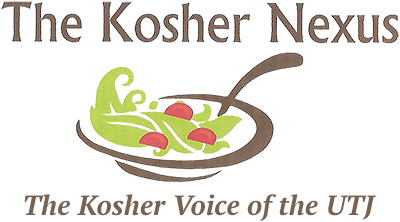1. Air-Chilled
Typically referring to poultry, this is a method of cooling chicken to the required 40˚F after slaughter. It chills chicken in a cold-air chamber or by blasting it with cold air, rather than in the cold-water bath typically used, according to the United States Department of Agriculture (USDA). Because it doesn’t absorb water, air-chilled chicken often has a better flavor and texture.
2. Free-Range
A USDA-defined term, free-range means the animal must have access to the outside. However, it doesn’t mean the animal actually goes outside. In the case of chickens, for example, free-range chickens may have access to a door that leads to the outside, but they may still remain primarily indoors because they don’t see or can’t find the door. Likewise, the outdoor space the animals have access to might be quite small.
3. Grass-Fed
This refers to beef that has been raised on a grass, rather than a grain, diet. These cows take longer to mature, and might be more nutritious. But because the USDA no longer enforces standards for this claim, it is too open to interpretation to hold much credence.
4. Humanely Raised
Seals from organizations like Certified Humane or American Humane Certified indicate that the farm on which the animal was raised has met certain standards for animal care. These refer to what they’re fed, how they are cared for, their living conditions, and other factors.
5. Kobe-Style
Authentic Kobe beef, from Japan, is known for its marbling and sublime flavor. Kobe-style beef is from certain strains of cattle, raised and processed in America, that share similar qualities to the Japanese beef and yield a similarly superior steak. However, don’t mistake it for the much revered Kobe beef.
6. Kosher
Kosher meat adheres to strict dietary guidelines of the Jewish faith. Meat is processed in a certain way, and only certain types of animals or cuts of meat are deemed kosher. It’s not necessarily any healthier than non-kosher meat.
7. Mechanically Separated
Often used to make deli meat, sausage, and hot dogs, this process for pork and poultry forces bones through a sieve-like machine to separate edible meat from the bone.
8. Minimally Processed
This means that the food was processed for consumption in a way that does not significantly alter the product.
9. Natural
If a product bears the “Natural” designation on its label, it means it doesn’t contain artificial ingredients, added colors, and that it’s been minimally processed, according to the USDA. The label should also include statements indicating why it’s deemed natural.
Also sometimes labeled as “raised without antibiotics,” the producer must be able to produce proof and documentation that their meat or poultry animals were not given antibiotics.
11. Nitrates and Nitrites
These chemical compounds, which are found naturally in some foods, are used as a preservative for processed meats like hot dogs and bacon.
12. Organic
When it comes to meat, this USDA certification ensures that the animal was raised in conditions that reflect their natural behaviors, such as cows being able to graze, and that they were not given antibiotics or hormones. They should also be fed 100 percent organic feed and forage — meaning, free of synthetic pesticides and fertilizers.
13. Pastured
Similar to the term “grass-fed,” this means the poultry or meat was raised in a field or pasture where it had access to grass. This term usually refers to animals like pigs and chickens, which don’t live on grass alone. However, this term is not regulated by the USDA. But if you see “pasture-raised” with another label, such as Certified Humane, that means the animal had both outdoor and indoor barn space that’s significant enough to not cause overcrowding.
14. Raised Cage-Free
Cage-free is a term regulated by the USDA. Usually referring to poultry, cage-free means that the animals were in a large enclosed room or enclosure with free access to food and water, and to roam around. But they do not have access to the outdoors.
15. Raised Without Added Hormones
While this term means that hormones were not administered to the animals, it is prohibited to use hormones on pork and poultry anyway — hence, the label must also state “Federal regulations prohibit the use of hormones.”
16. Uncured
This refers to bacon and other meats that are preserved without using salt and sodium nitrites.
17. USDA Choice
This beef quality designation is not quite as high as Prime, but still will have decent fat content and juiciness.
18. USDA Prime
This is a restaurant-caliber cut of beef from a high-quality cattle. It’s known for its marbling, or fat distribution.
19. USDA Select
This quality level of beef is leaner than its higher-end counterparts of Choice and Prime. A lower grade, and less expensive, it might be tough and is better suited to moist cooking like stew.
20. Vegetarian Fed
The animals were given feed that does not contain meat, fish, or animal byproducts.


Recent Comments